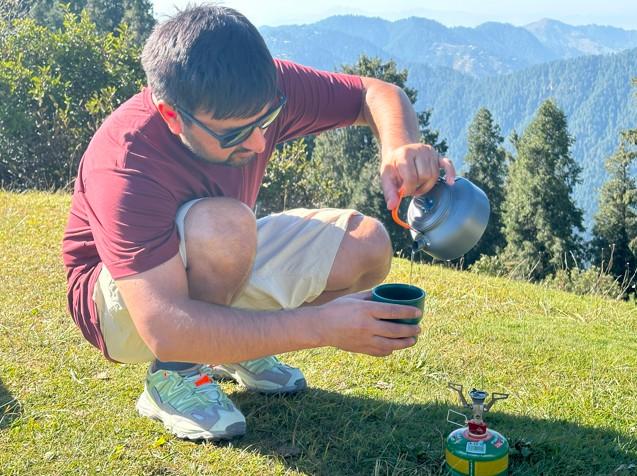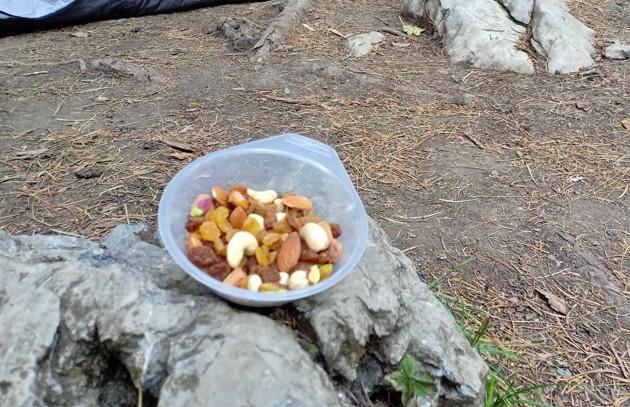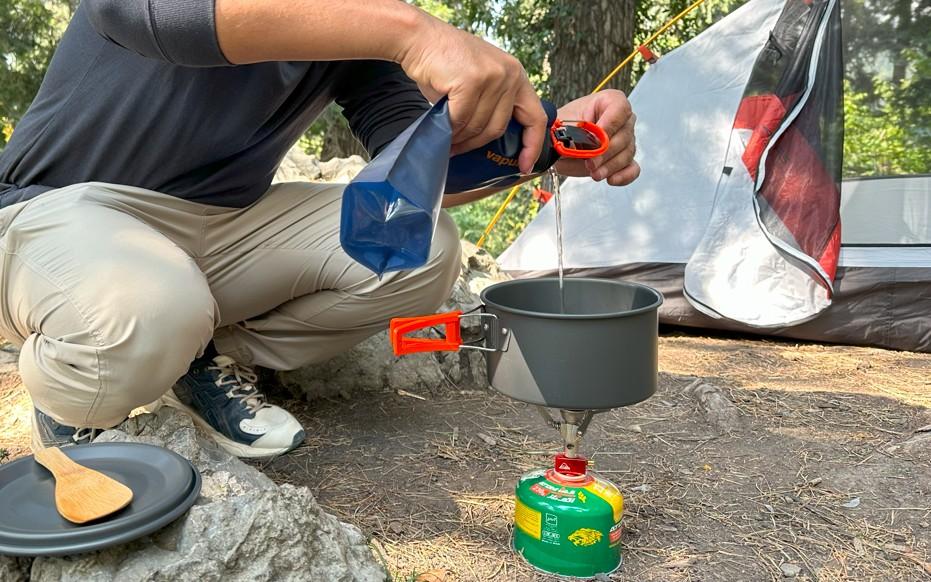This is one of those questions every backpacker has to face at some point. Do you really need to bring a backpacking stove when heading into the backcountry, or can you get by without one? Over the years, I’ve done both—some trips where a hot meal at the end of the day felt like a luxury, and others where I left the stove behind and didn’t miss it (much).
Related: Best Backpacking Stoves
Now, I’ll admit up front—I enjoy my food on the trail. I’ve carried everything from gas canisters to alcohol stoves, and even gone stoveless just to test my limits. But like most gear decisions, it really comes down to your trip style, how long you’re out, and what kind of food you’re happy to eat.
In this article, we’ll break down the pros and cons of stove vs. stoveless setups and help you figure out what’s best for your next trip. Whether you’re a minimalist looking to shed every gram or someone who won’t start the day without a hot brew, there’s a solution that fits. Let’s dive in.
Reasons to Bring a Stove
Now I’ll be the first to admit—I don’t always carry a stove. But there are plenty of times when it absolutely earns its place in the pack. Here are the main reasons you might want to bring one along:
Hot Meals Are Good for the Soul
After a long day on your feet, there’s nothing quite like a hot meal. It doesn’t need to be anything fancy—just something warm and filling to help you relax, recover, and reset for the next day.

Particularly on multi-day hikes, a warm dinner can lift your mood in ways that cold food just can’t.
Cold Weather Demands It
I don’t leave my stove at home when heading out backpacking in cold weather. The need for hot food and drinks becomes more than a comfort in cold weather.
In early spring, late autumn, alpine areas or during winter hikes, a stove helps keep your core temperature up. A warm drink in the tent at night can make a big difference to both warmth and morale.
Real Cooking Options
Some hikers like to get creative with trail meals. If that’s you, then a stove opens up all sorts of culinary possibilities. It also lets you simmer, rehydrate meals properly, or boil up extra water when needed.
Water Purification Back-Up
Boiling water is one of the most reliable ways to make it safe to drink, particularly in areas where you’re unsure about water quality.
Filters can clog, and chemicals don’t always cut it in cold or silty water. I’ve had trips where boiling was the only real option, and I was glad to have a stove on hand.
Fast and Efficient
Modern stoves, particularly canister models, are fast and simple. You can have boiling water in under three minutes, which is handy at the end of a big day or when you just want a tea before hitting the trail.

They’re lightweight too—some weigh less than 100 grams—so you’re not adding much to your base weight
Reasons to Go Stoveless
Now, while I’m a fan of a hot meal at the end of the day, there are definitely times when I leave the stove at home.
Going stoveless isn’t just for the hardcore ultralighters—there are some pretty compelling reasons to give it a try, depending on your trip.
Lightens the Load
Let’s be honest—every gram counts. Leaving the stove, fuel, and cookware behind can cut down your pack weight more than you’d expect.
It also means less bulk, which makes packing easier, particularly for those using smaller packs. If you’re fastpacking or aiming for big distances each day, ditching the stove can be a smart move.
Cuts Out the Hassle
No stove means one less thing to worry about. You don’t have to hunt down gas canisters in trail towns, deal with finicky igniters, or worry about leaks in your pack.
You also avoid carrying water just for cooking—handy on dry tracks where every drop counts.
More Time for the Trail
Cooking, cleaning, and setting up a stove takes time. If you’re the type who likes to hit the trail early or spend more time exploring side tracks and taking photos, going stoveless can simplify your routine. Grab a cold-soaked meal or snack and you’re good to go.
Tread More Lightly
By skipping the stove, you’re reducing fuel consumption, which lowers your carbon footprint. You’re also avoiding the waste associated with disposable canisters.
It’s a small change, but over time and with enough people, it makes a difference—and it aligns well with Leave No Trace ethics.
Works Where Stoves Don’t
Some areas have restrictions on stove use due to fire risk, especially during dry summer months. When there’s a total fire ban, going stoveless means you’re not impacted—you can hike through without needing to worry about fuel rules or legal issues.
Common Stoveless Food Options
If you’re going stoveless, the key is smart food planning. It’s not all bars and jerky—though those still have their place.
Cold-Soaked Meals
Cold soaking isn’t everyone’s cup of tea, but it’s a solid option when weight and simplicity are priorities. Just add water to your chosen ingredients a couple of hours ahead of time, and let them rehydrate as you walk.
- Go-to options: oats, couscous, ramen, instant mashed potatoes.
- What you’ll need: a leak-proof jar or container with a secure lid.
- Couscous and instant mash rehydrate quicker than you think—great for short breaks.
Related: No Cook Camping Food Ideas
Ready-to-Eat Staples
This is where stoveless really shines—zero prep, minimal cleanup, and loads of calories. Ideal for lunch stops or when you want to hit the trail again quickly.

- Trail mix, snack bars, jerky, nut butters, tortillas, and hard cheeses are all staples.
- Look for dense, high-fat items to maximize energy per gram.
- Wraps and nut butter have saved many a lunchtime for me on long hauls.
Fresh Produce and Deli Meats
While they don’t last forever, a bit of fresh food early in your hike goes a long way in keeping meals interesting and your body fueled.
- Apples, carrots, cherry tomatoes, and even salami or cheese keep well for a day or two.
- Great for variety and boosting your intake of vitamins and fiber.
Considerations and Trade-Offs
Going stoveless isn’t just about shaving grams—it comes with its own set of compromises. Before ditching your stove, it’s worth thinking through a few real-world impacts I’ve encountered out on the trail.
Limited Meal Variety
Let’s be honest—eating cold couscous three nights in a row wears thin quickly. When you’re running stoveless, your meal options tend to shrink, and that can lead to what’s often called “food fatigue.”
- Cold-soaked meals and ready-to-eat snacks only go so far.
- If you crave a hot curry or morning coffee, this setup might feel restrictive.
Potential for Lower Morale
There’s nothing quite like a warm feed at the end of a hard day, especially in cold or wet conditions. I’ve had nights when a hot meal did more for morale than any gear could.
- Without hot food, cold evenings can feel a bit bleaker.
- Over time, missing that comfort can wear you down.
Food Weight and Bulk
Ironically, skipping the stove doesn’t always mean a lighter load. Pre-cooked or ready-to-eat meals often weigh more than dehydrated options, and they tend to take up more space too.
- It’s easy to overlook this when planning.
- For longer trips, it might offset the weight savings of not carrying a stove.
Conclusion: Should You Bring a Stove?
If you’re out for just a night or two in warm conditions, or trying to shave grams and move fast, ditching the stove can be surprisingly liberating. Less weight, fewer logistics, and more time to enjoy the trail. But on multi-day treks, particularly in cold or alpine environments, a stove quickly becomes more than a luxury. It’s a comfort, a safety tool, and often the highlight of the evening. There’s something about a hot meal after a tough day that just makes everything feel better.
Over the years I’ve done everything from full kitchen setups on long, cold-weather hikes to completely stoveless fastpacking trips in summer—and there’s merit to both approaches. So while going stoveless has its place, for me, a stove usually earns its spot in the pack more often than not. Like most gear decisions, it comes down to your goals for the trip, the conditions you expect, and what makes the experience more enjoyable for you.
